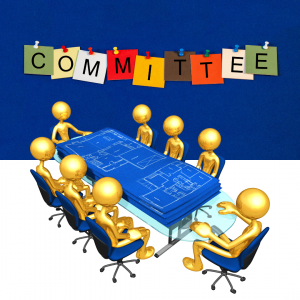 Does your board table decisions because you can’t get through all of the discussion? Is there a big project that your association needs to complete, but the minutia of it is overwhelming the board? Don’t let the added work hold you back. Recruit volunteers from the membership to assist the board through the creation of a committee.
Does your board table decisions because you can’t get through all of the discussion? Is there a big project that your association needs to complete, but the minutia of it is overwhelming the board? Don’t let the added work hold you back. Recruit volunteers from the membership to assist the board through the creation of a committee.
Under Corporations Code § 7212, the board of directors of a community association may, subject to the association’s governing documents, vote to form one or more committees that serve at the pleasure of the board. There are two basic types of committees: committees with decision-making authority—such as an executive “committee of the board” made up entirely of directors to which the board has delegated certain powers, or an architectural review committee—and advisory committees, which merely provide the board with non-binding information and advice regarding specific issues, such as a social committee.
A special type of committee, applicable only to community associations, is a “subcommittee” of the board consisting of the treasurer and at least one other board member that performs the required monthly review of the association’s finances, which is required under Civil Code § 5500, independent of a board meeting. When this subcommittee performs this financial review, the board must ratify that review at the next open board meeting and note that ratification in the meeting minutes.
Generally, an association’s board is responsible for appointing committee members, unless its bylaws give that responsibility to a specific corporate officer, such as the board president. For committees such as an architectural review committee, the CC&Rs will often set out the committee’s mission, composition, and protocols. For other committees, the board resolution creating the committee may contain a “charter” with this information.
While all committees serve at the pleasure of the board and the board ultimately remains responsible for governing the association, creating committee charters is still good practice. When a committee charter is contained in a board resolution, it sets forth a legal framework within which the committee operates and identifies the boundaries of the committee’s purposes.
Committees that lack charters can generate a lot of confusion. For example, can an architectural committee grant a variance to an association’s architectural rules without the board’s approval? If there is no committee charter and the association’s CC&Rs do not specify, the committee might not know and might wrongfully grant (or deny) a variance, which could be costly for the board to undo or resolve.
There are other, practical reasons for creating committee charters, as well. Creating a committee charter may instill confidence in the community that committee members clearly understand and are on the same page regarding their roles and responsibilities. By the same token, it can serve as a guide for committee members, who can refer to the charter in evaluating their and other committee members’ actions, which fosters efficiency and effectiveness.
This is particularly the case when it comes to new committee members, who can refer to the committee charter as an introduction to the committee and to their roles, which can promote overall sustainability for the committee and foster a smooth transition between member turnover.
SwedelsonGottlieb recommends that community association boards review their committee charters annually to be sure they still support the current board’s vision and the association’s overall mission. A best practice is to put the review on the annual calendar to take place just after the annual meeting.
 HOA Law Blog
HOA Law Blog


